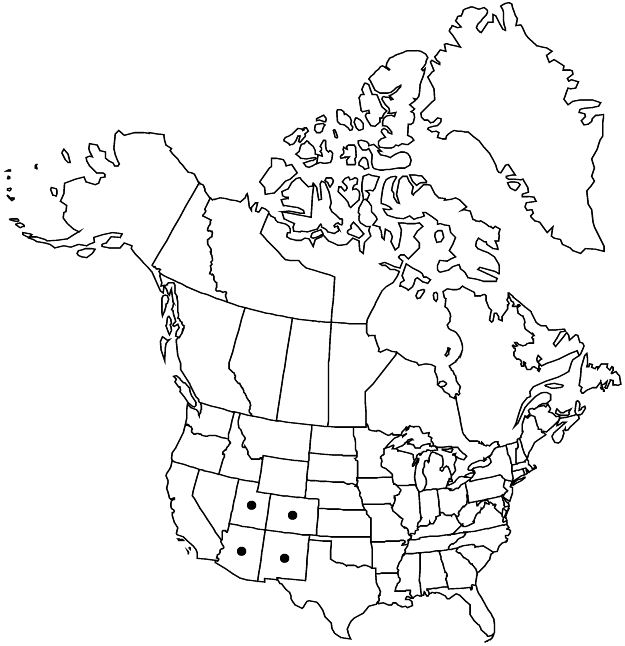Difference between revisions of "Rubus neomexicanus"
Smithsonian Contr. Knowl. 5(6): 55. 1853.
FNA>Volume Importer |
imported>Volume Importer |
||
| (3 intermediate revisions by 2 users not shown) | |||
| Line 16: | Line 16: | ||
|name=Rubus deliciosus var. neomexicanus | |name=Rubus deliciosus var. neomexicanus | ||
|authority=(A. Gray) Kearney | |authority=(A. Gray) Kearney | ||
| + | |rank=variety | ||
}} {{Treatment/ID/Synonym | }} {{Treatment/ID/Synonym | ||
|name=R. exrubicundus | |name=R. exrubicundus | ||
|authority=L. H. Bailey | |authority=L. H. Bailey | ||
| + | |rank=species | ||
}} | }} | ||
|hierarchy=Rosaceae;Rosaceae subfam. Rosoideae;Rosaceae tribe Rubeae;Rubus;Rubus neomexicanus | |hierarchy=Rosaceae;Rosaceae subfam. Rosoideae;Rosaceae tribe Rubeae;Rubus;Rubus neomexicanus | ||
| Line 43: | Line 45: | ||
-->{{#Taxon: | -->{{#Taxon: | ||
name=Rubus neomexicanus | name=Rubus neomexicanus | ||
| − | |||
|authority=A. Gray | |authority=A. Gray | ||
|rank=species | |rank=species | ||
| Line 58: | Line 59: | ||
|publication year=1853 | |publication year=1853 | ||
|special status=Endemic | |special status=Endemic | ||
| − | |source xml=https:// | + | |source xml=https://bitbucket.org/aafc-mbb/fna-data-curation/src/2e0870ddd59836b60bcf96646a41e87ea5a5943a/coarse_grained_fna_xml/V9/V9_60.xml |
|subfamily=Rosaceae subfam. Rosoideae | |subfamily=Rosaceae subfam. Rosoideae | ||
|tribe=Rosaceae tribe Rubeae | |tribe=Rosaceae tribe Rubeae | ||
Latest revision as of 22:58, 5 November 2020
Shrubs, (10–)20–30(–35) dm, unarmed. Stems erect, sparsely to moderately short-hairy, sparsely stipitate-glandular, not pruinose. Leaves deciduous, simple; stipules lanceolate to narrowly ovate, (4–)6–8(–10) mm; blade cordate to broadly ovate, (2.5–)3.5–5.5(–6.5) × (2.5–)3.5–5.5(–8) cm, base shallowly to deeply cordate, palmately, shallowly to deeply 3–5(–7)-lobed, margins coarsely doubly dentate, apex acute to broadly obtuse, abaxial surfaces moderately hairy, sparsely stipitate-glandular. Inflorescences 1(–2)-flowered. Pedicels sparsely to moderately hairy, sparsely to densely short- to long-stipitate-glandular. Flowers bisexual; petals white, broadly obovate to suborbiculate, (15–)20–30(–35) mm; filaments filiform; ovaries glabrous, styles clavate, villous. Fruits red, hemispheric, to 1 cm; drupelets 20, coherent, separating from torus. 2n = 14.
Phenology: Flowering May–Sep.
Habitat: Mountain slopes, canyons, streams
Elevation: 1400–2600 m
Distribution

Ariz., Colo., N.Mex., Utah.
Discussion
Rubus neomexicanus is recognized by its erect, unarmed stems, relatively small, simple leaves with acute to obtuse lobes, the terminal prominent, deeply cordate base, moderately hairy abaxially, large flowers, white petals, and densely long-hairy, clavate styles. The species is similar to R. bartonianus and R. deliciosus, and treating it as a variety of the latter species would be reasonable, as W. O. Focke (1910) considered the two conspecific.
Selected References
None.